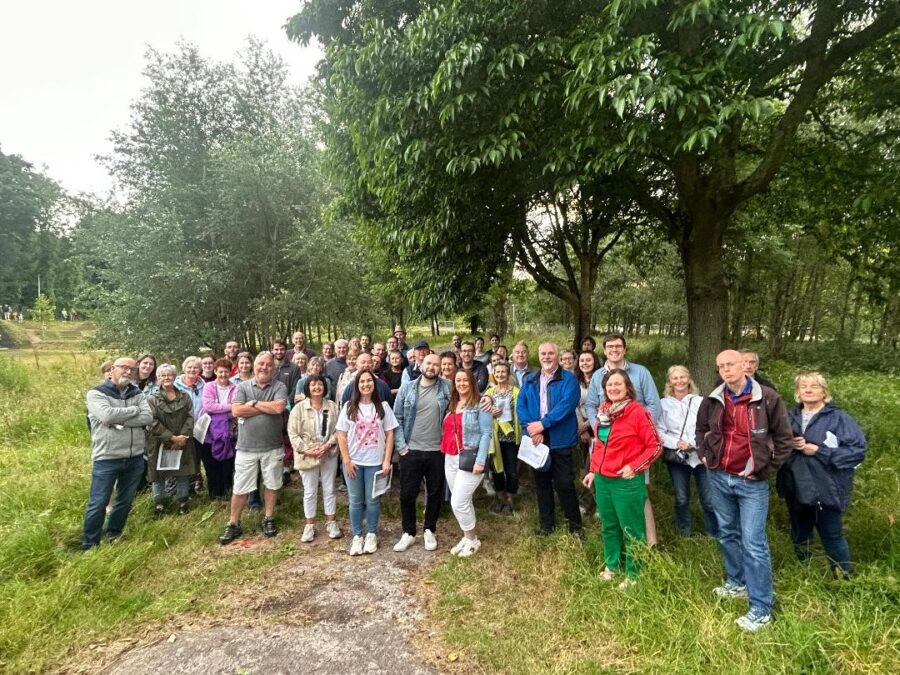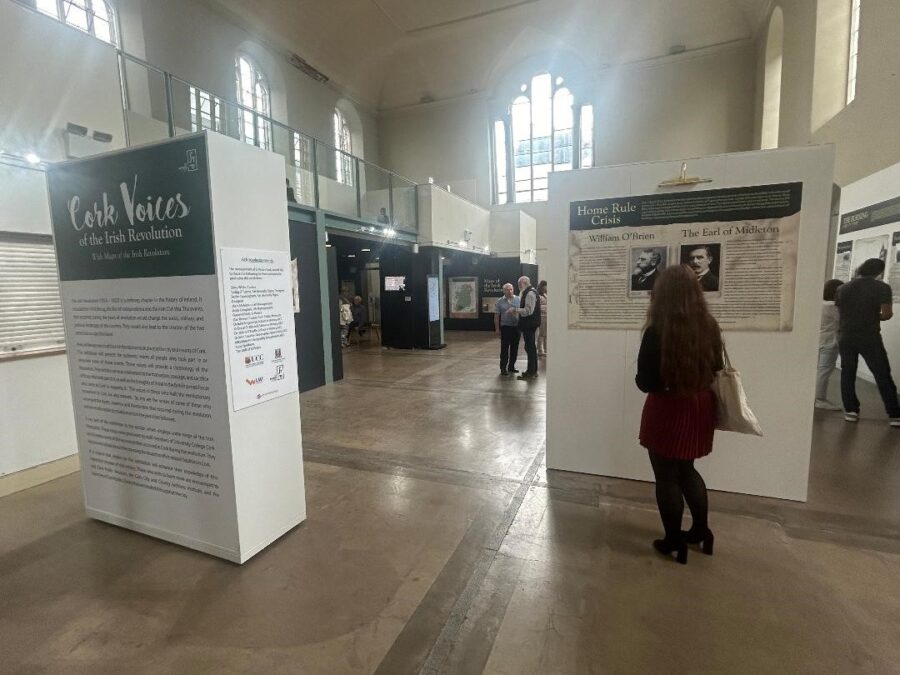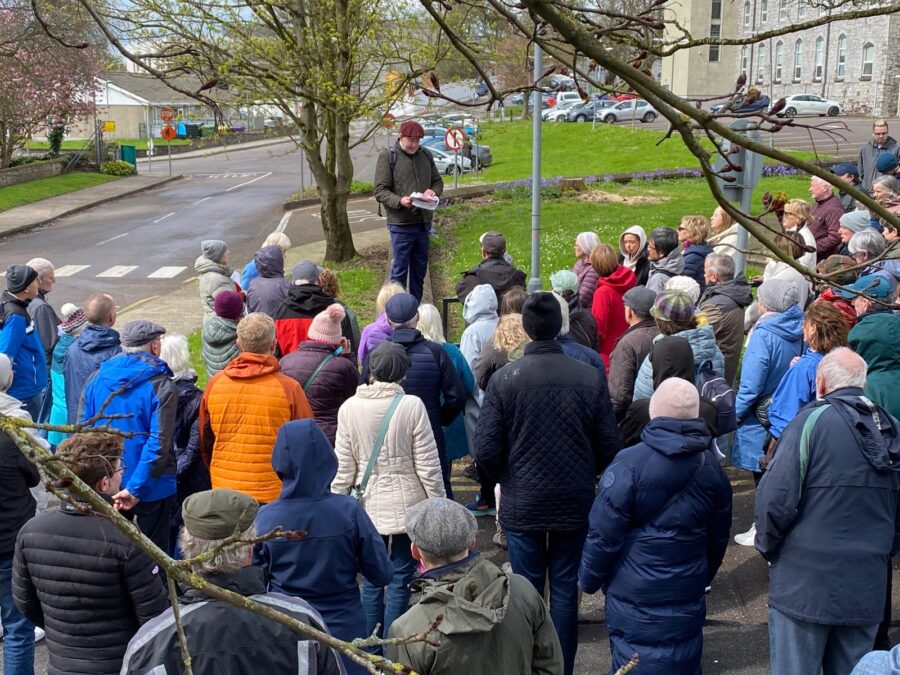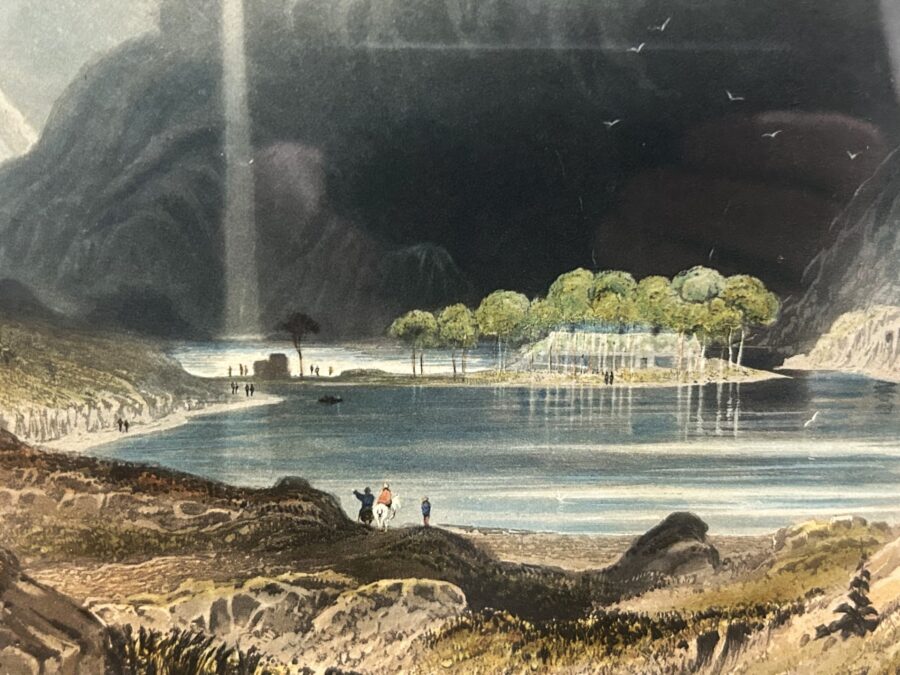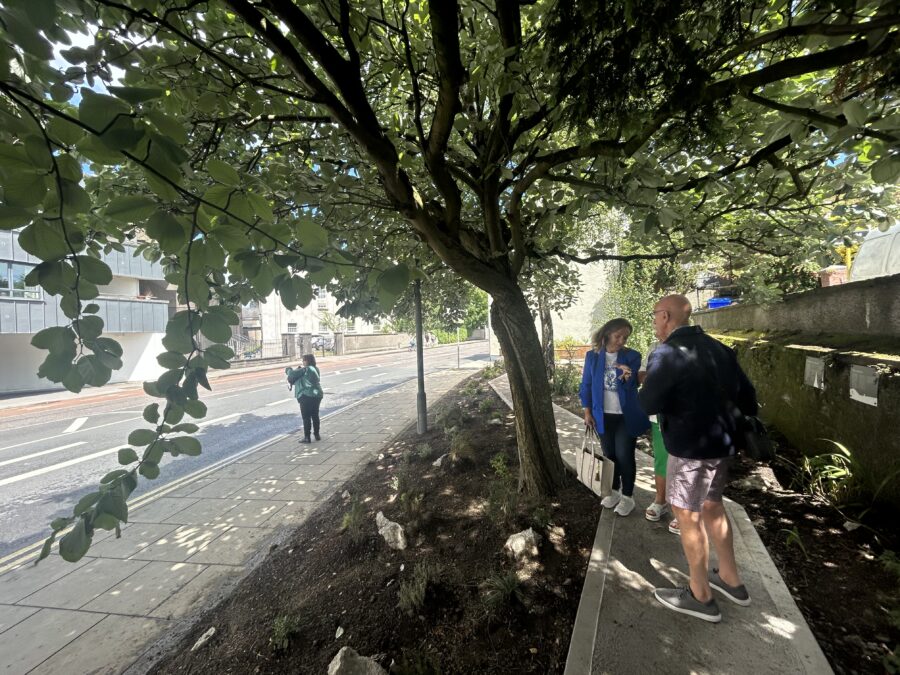
Kieran’s Our City, Our Town Article,
Cork Independent, 29 August 2024
Ronnie Herlihy Pocket Park at Langford Row
In recent weeks, Douglas Street Business Association in conjunction with Cork City Council launched a new pocket park at Langford Row. The park is in memory of the late Ronnie Herlihy, Local Historian, who wrote and gave walking tours across the South Parish. The new pocket park contains some of his writings on information panels.
The park is about unlocking more of the sense of place of the South Parish and sending people into a parish as Ronnie describes in his books “where you’ll find something of historical interest around almost every corner”.
In publishing his first edition of his South Parish book in 2003, Ronnie writes that he was aiming to do two things. Firstly, the book was simply meant to be a place one could go if they were interested in the rich heritage of the South Parish. Ronnie describes his work as, “a sort of one-stop-shop if you like, compiling between the covers of one book a list and some basic information about many of the historic places within the present parish, rather than having to search out the numerous different publications that contain articles or reports on those places”.
Secondly, Ronnie was hoping to awaken in people, no matter where they live, an awareness of their own surroundings, and “to get them thinking of the fantastic history all around them that has led to the making of this great City of Cork”.
Ronnie describes that all 1,000 copies of the initial South Parish book were sold. In the process €7,300 was donated to the Children’s Leukaemia Unit in the Mercy Hospital, being all the proceeds received from the sale of the book.
Ronnie undertook a second edition because of the number of times people asked him if the book was still available to buy. So, he published a second, revised edition. In doing a revised edition, it afforded Ronnie the opportunity to expand on many of the items in the original book. In Ronnie’s new introduction he quotes; “Having spent over 44 years either living or working in the heart of the South Parish, the area is in my blood. I’m still fascinated by the history of this part of Cork City, and as a proud member of the Cork South Parish Historical Society. We know that learning about the history of our own place is a never-ending process. Take a walk with me now in my own place, the open air museum that is the South Parish”.

The ‘awaken in people’ and the connection methodologies served Ronnie well in his next publication journey where he took on Victorian Cork. As he researched the South Parish, he spotted other nuggets of stories from Cork’s Victorian past, which took him off on another adventure.
Known as Victorian Cork, the book looked at events that occurred during the early Victorian period, from 1837 to 1859. The publication sought to as Ronnie noted “throw a little light onto the past, allowing the modern reader the opportunity of peering through the eyes of their Cork ancestors. It will hopefully give them a glimpse of a city that would only have been familiar to their grandparents, great-grandparents or great great-grandparents”.
The majority of the newspaper reports in his book were gleamed from the Cork Examiner, apart from the first few years between 1837 and 1841, when The Constitution or Cork Advertiser, was exclusively used. Where in our time it is easier than ever to use the digitised Irish Newspaper Archive from home, back in the day, Ronnie spent hour after hour, work lunchbreak after work lunchbreak turning physical newspaper pages and micro-film pages in Local Studies in Cork City Library.
Ronnie’s interest in people and their stories also brought him on his journey with his third book – this time returning to a physical space that of St Joseph’s Cemetery. The idea for writing this book followed on from research he carried out when he undertook a project on St Joseph’s Cemetery for the Annual Exhibition of the South Parish Historical Society.
That initial research, which looked at around two dozen burials in the cemetery, led to him as he quotes in his introduction spending many hours there in the summer of 2008, walking among the headstones of our ancestors, and “realising for the first time what an important historic gem we have here in the city”.
From that initial visit to research the project, as Ronnie explains in his introduction he was hooked. Ronnie followed that up by creating a powerpoint presentation that looked at the history of the cemetery, a number of those who are buried there, and some of the impressive monuments dotted around it. Afterwards, based on the presentation, Ronnie put together a walking tour of the cemetery. The next most logical step after that was to write a book.
In the immediate years leading up to his shock death, Ronnie’s interest in public history gathered further momentum. For many years Ronnie was a core part of the South Parish Historical Society annual exhibition – he was a core driver – and there was many a year he would spend hours and hours and hours involved in its organisation and its evolution
Ronnie’s adult education courses with Tom Spalding and others, regular phone ins with Neil Prendeville left many citizens wondering if they knew their city at all; it brought many citizens to Ronnie’s banner, so to speak, wishing to see the city through his eyes. In addition, there was his regularly gifting of photos and other snippets of Cork history to the world of Facebook.
The new pocket park is a fitting memory to Ronnie Herlihy – a great local historian but also a proud Corkonian.
Kieran’s September 2024 Tours, All free, 2 hours, no booking required:
- Sunday 1 September, The Friar’s Walk in association with Douglas Street Autumnfest; Discover Red Abbey and Barrack Street area, Meet at Red Abbey tower, off Douglas Street, 12noon.
- Sunday 8 September, Blackpool: Its History and Heritage; meet at square on St Mary’s Road, opp North Cathedral, 2pm.
- Saturday 14 September, Cork South Docklands; meet at Kennedy Park, Victoria Road, 2pm.
- Saturday 21 September, Fitzgerald’s Park: The People’s Park, meet at the park band stand, 2pm.
- Sunday 22 September, Stories from Blackrock and Mahon, meet in adjacent carpark at base of Blackrock Castle, 2pm.
Caption:
1268a. Ronnie Herilihy Pocket Park, Langford Row, Cork (picture: Kieran McCarthy).
1268b. The late Ronnie Herlihy.
